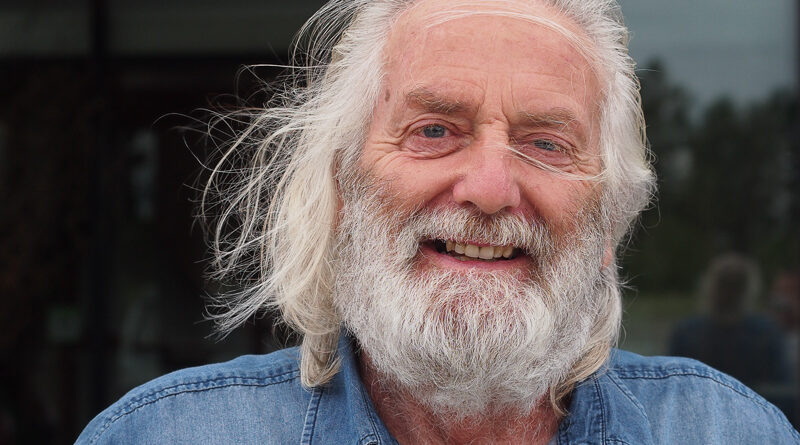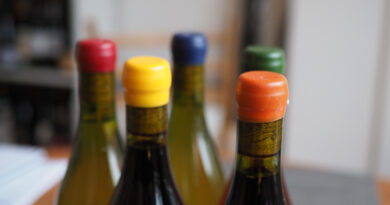Marlborough at 50: the remarkable Yealands story
‘Think boldly, tread lightly, and never say it can’t be done:’ that’s the official motto Peter Yealands chose for the company that still bears his name, but perhaps a more appropriate one might be ‘It’s easier to ask for forgiveness than permission’. This is the way that the serial entrepreneur managed to build Yealands from scratch into the largest single vineyard in Australasia, and New Zealand’s sixth largest wine company, in just 10 years. The road was rocky in parts, for sure, but when I caught up with him just before he stepped down from being involved with the company in 2018, he was still bullish and seemingly hungry to achieve more. This is a story that needs to be told.
Back in 1998 Peter Yealands, already a successful entrepreneur, planted his first vineyard in Grove Town, Marlborough, at the age of 50. ‘There were no other vines in the mid-to-lower Wairau Valley,’ he recalls. ‘It was deemed to be too wet and too heavy.’ Yealands had his critics, including Theo Giesen (according to Yealands; Theo is one of the three brothers running the large Giesen winery), who later also developed a vineyard in the area. ‘If you planted anywhere where there wasn’t already a cluster of vineyards, you were deemed mad. That’s what happened when I went to Grovetown, and that’s what happened when I went up the Northbank, to what is now quite a popular region.’ He developed a 300 hectare vineyard in Northbank in 2000, and later sold it to Matua. People had avoided this part of the Wairau Valley because it was on the shady side, considered too cold for vines. But Yealands was convinced that the river would bring in warm air and stop the site being frosted. He was right.
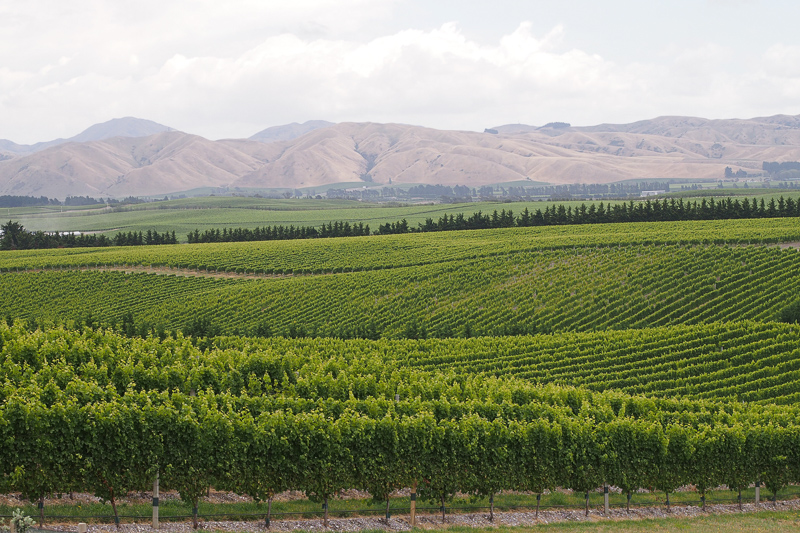
Yealands wasn’t a wine drinker, and had no previous experience of the wine industry, so why did he get involved with grapes? ‘It was the adventure and challenge of working the land and turning it into something good and useful. No sooner had I developed my vineyard and got the first crop off it, I had Theo Giesen wanting to buy it and he offered me big money. I thought, wow, this is a good industry!’ So he sculpted his Northbank vineyard, and bought some adjoining land because he figured that his vineyard development would push local land prices up. He was assisted by his contact at Fruitfed Supplies who sold him product and told him how to use it. ‘I was very much a novice’.
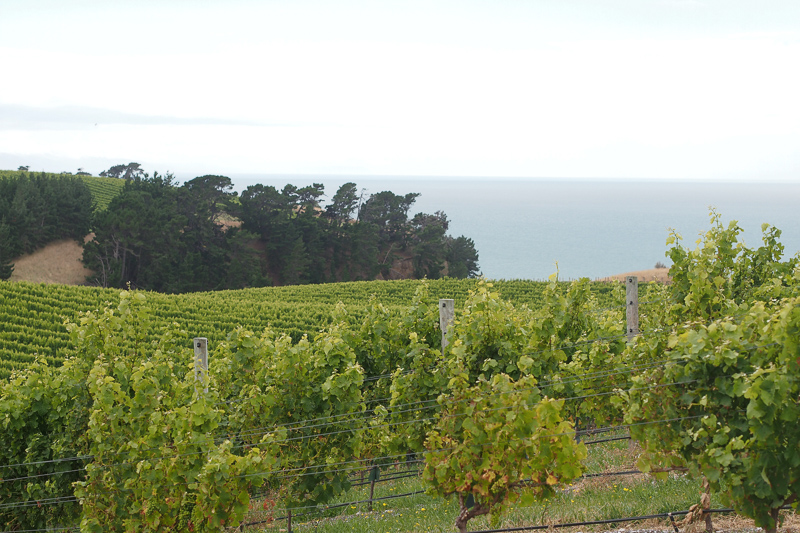
But these two first vineyards, both of which he sold to big companies, were to be merely a dress rehearsal for his grand project: Yealands Estate, which is now the sixth largest producer in the country, and has New Zealand’s largest single vineyard. ‘I came away from the Northbank with two pocketfuls of money. After I had paid my bills, I had one left, so I came here [to the Awatere] and bought a property.’ What Yealands doesn’t mention is his long-running legal battle with Jim Delegat, as he attempted to buy Oyster Bay but was pushed back. Oyster Bay Marlborough Vineyards (OBMV) was formed by Delegats in 1999, and floated publicly, with Delegats the largest shareholder with a third of the shares. Yealands was the second largest shareholder, and in 2005 attempted to buy shares to take his holding to 51%. He complained that OBMV was selling grapes to its sole client, Delegats, at a price he considered below the market value, and thus the shareholders were losing out and OBMV was undervalued. The legal battle took place over a five-month period in the second half of 2005 and turned quite acrimonious, and was only ended in 2010 when Delegats purchased Yealands’ 4.8% shareholding.
But his main focus was to be transforming Marlborough’s Awatere Valley. ‘When I came out to the Awatere there were only about 5 hectares of grapes there,’ says Yealands. ‘It was very much early days. People said you’d never grow grapes out here, and if you did you wouldn’t get anyone to work here. It had a nickname of little Siberia.’ He says that there is some validity in this criticism, and that it is still a bit too cold in some seasons. When Yealands bought his first land here in 1998 it was a derelict property and the for sale sign was underwater. ‘When I bought it I didn’t have an interest in grapes: I bought it because I was able to buy if for half the asking price and I love a bargain,’ he says. ‘Then I got the GST back. I thought, what the hell am I going to do with it?’ At the time he had a deer farm, a forest and an aggregate business, so he had lots of heavy machinery to contour the land. All the other vineyards he’d planted were done with laser guidance to get the rows straight, but in the Awatere he was dealing with rolling hills. He solved this problem by talking to GPS experts Trimble in the USA, convincing them to set up a franchise in New Zealand, using him as their guinea-pig customer. ‘I bought a big rubber tracked challenger tractor from America, we put a GPS in it, and I was able to develop my first vineyard sitting in that tractor seat,’ he recalls. In 2002, over an eight month period, they developed 150 hectares of vineyard with a crew of just three.
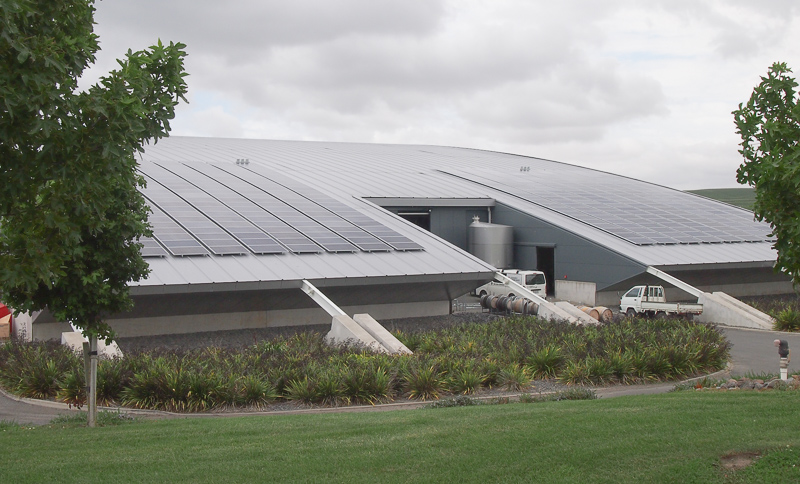
‘We planted it and it was so easy and so rewarding that I couldn’t stop. So I bought the neighbour across the road.’ Yealands says that each year he kept buying up the neighbours, and the price kept going up. ‘Every year my neighbours were waiting for me to knock at the door.’ Yealands in its current form is the result of purchasing eight farms.
Suddenly, land that isn’t worth much is worth a great deal when it is converted to a vineyard. ‘All eight of those farmers would probably have averaged NZ$125 000 a year in income. They were all family farms, all around 150 hectares, and for most of them one of the partners had a supplementary income,’ explains Yealands. ‘Now that land is producing $100 million worth of product.’ So it has gone from $1 million a year to $100 million a year through change of use. ‘This is an example of what has happened throughout Marlborough. It’s a no brainer.’
As the vineyards came online, Yealands was selling the grapes on the spot market, which got him a 20-30% premium over contract prices, but at a risk. Over the period 2003-2006 he saw that his premiums were getting a bit less. ‘When supply meets market, I could see that I would have a problem,’ he says. ‘So I thought the only way to safeguard my investment would be to build a winery. In 2006 I managed to get finance to build a winery here. I’d never been in a winery and I’d hardly drunk much wine.’ The winery was built in 2007 and opened in 2008, the year of the GFC. It was not great timing.
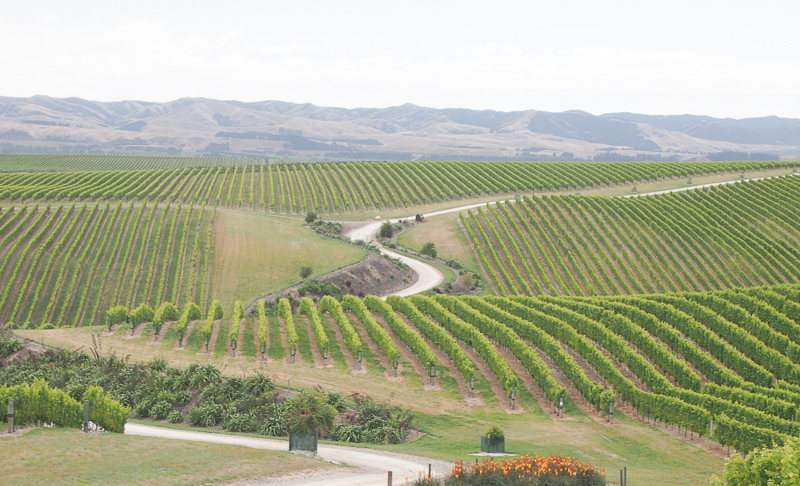
Yealands had 700 hectares planted by this stage and was selling grapes to the highest bidder. He’d used all his capital gains on property to buy more property. ‘I knew it was high risk and I was trying to get that risk sidelined,’ he says. ‘And I did. The GFC was unexpected but in hindsight you know that when things get too heady they always fall over. I had a good bank and good people and we grew this business from zero customers in 2008, and we are now exporting to 85 countries, and we are the sixth largest producer in New Zealand. We are one of the biggest employers in Marlborough and we have the biggest single vineyard in Australasia.’ The Yealands vineyard is currently at over 1000 hectares and is still growing, with 200 hectares in development. They own 100 hectares in the Wairau Valley and source from 30 contract growers.
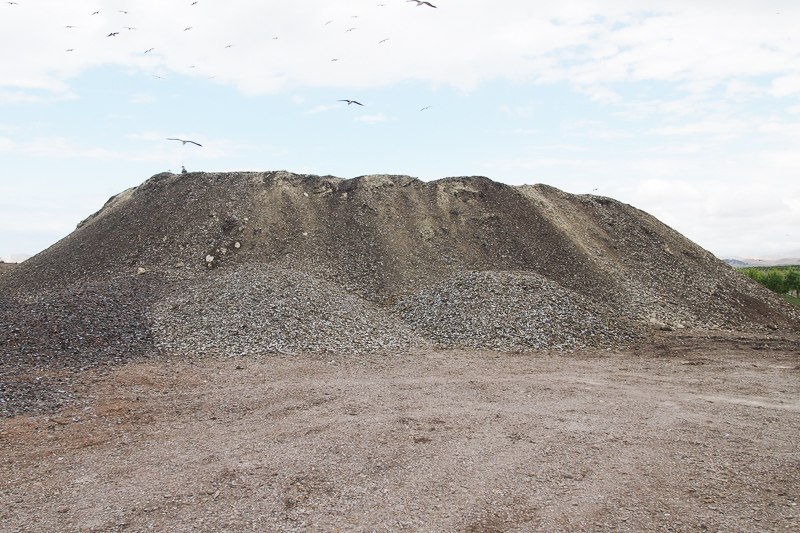
The ride has been uncomfortable in places, though. In 2011 Yealands merged with Ager Sectus, a mid-sized wine investment company that owned Hawke’s Bay winery Crossroads, and Awatere winery The Crossings, to form the Yealands Wine Group. Then, in 2015, local power company Marlborough Lines paid NZ$89m for an 80% stake in Yealands Wine Group. Owned in trust by the local community, Marlborough Lines were sitting on a lot of cash and wanted to invest it locally. They later purchased a further 5% from departed chief executive Jason Judkins, and then in July 2018 acquired Peter Yealands’ remaining shares, at which point he resigned as a director.
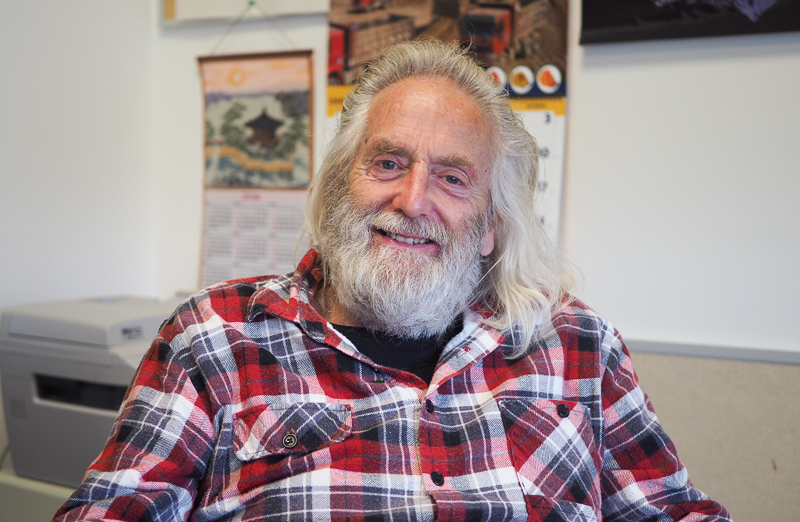
Yealands is bullish about the future of the region. ‘As long as we don’t do anything stupid – like the Austrian antifreeze or something like that – our reputation is very good and we don’t have anything to worry about.’ He reckons that there is possibly another 5000 hectares of plantable land in the region, although this is taking vineyards into extreme locations. ‘Fortunately, there is a limit, and this will make what we have developed more precious,’ he says, ‘but I don’t know that we want it to get too precious because this might drive us off the market. It’s a growing industry and there are always blips, but overall it is like house prices: they just keep going up.’
Yealands has been working on a new way of planting grapes in the Awatere, creating 8 metre wide terraces where it’s possible to plant two rows of grapes and still be able to machine harvest them. ‘It’s proving to be quite hard from a bureaucratic point of view because our soils are very sensitive. When you start doing earthworks on erosion-prone land it is quite hard.’ He adds: ‘I hope I can get there. I’m hoping this will be the forerunner of what lets the industry grow even more.’ Another development he is working on is higher trellising that would allow him to have sheep in the vineyard all the year round. Currently, sheep are run in the vineyard over winter, but when the new shoots emerge they have to be moved out. Yealands became famous for using baby doll sheep, which are shorter and thus can be used in the growing season too because they can’t reach the shoots. One of their key brands is named after these sheep. But in truth, they’ve not been a great success. ‘They are hard to breed because they are so inbred,’ says Yealands, ‘and they can get the lower grapes if they climb on the stays.’ His solution is to use 3 m long posts instead of the conventional 2.4 m ones. ‘Effectively my fruiting wire is 600 mm higher.’ This trial vineyard also makes use of broken posts (3% are taken out by machine harvesters each year) to give extra support to the fruiting wire, so that even with a heavy crop the trunks stay nice and straight. Coupled with underground drip irrigation, it means that if you are working in the vineyard you can simply stoop a little and get under the wire. ‘We’ll have a crop in this vineyard this year,’ he says. ‘It costs more but it will save money in the long terms. There will be sheep in there all the time.’
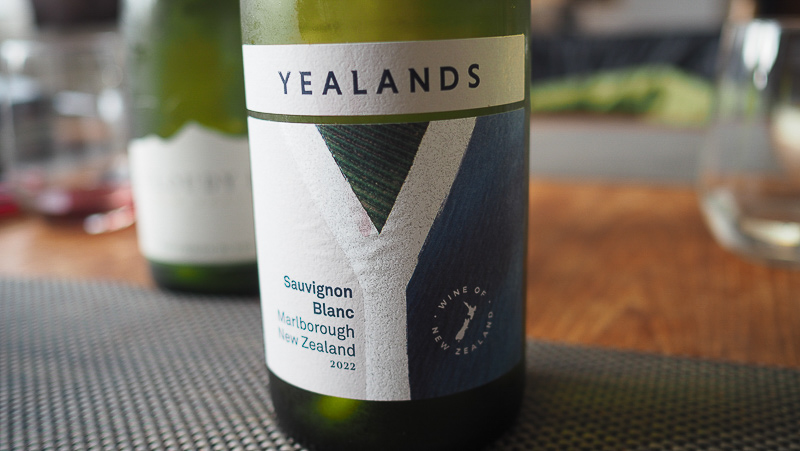
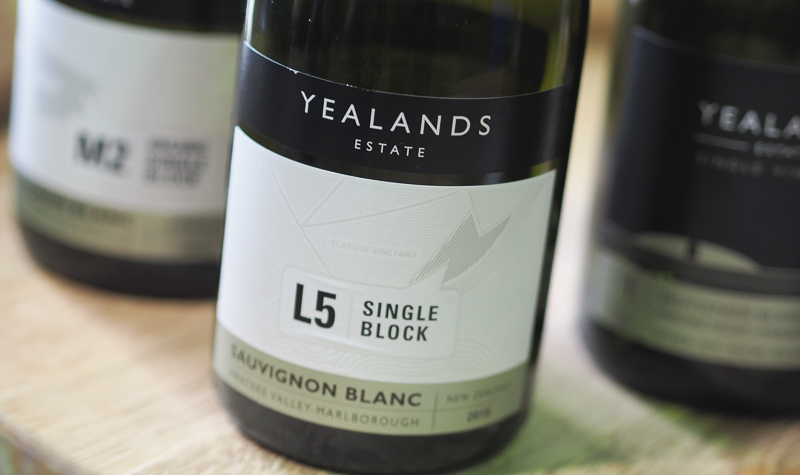
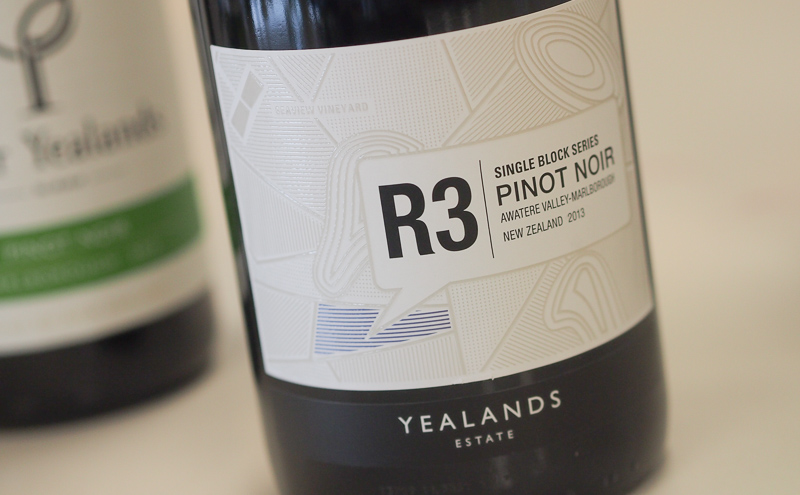
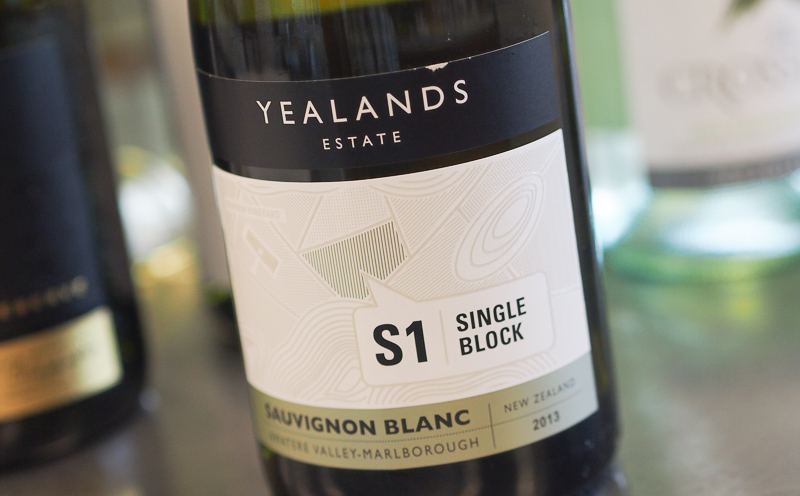
For all his entrepreneurial drive, Yealands is a quiet, private man. It proved quite difficult to get anyone in the region to speak about him on record because he isn’t that well known in the wine community. Ivan Sutherland, of Dog Point, is on the board of Marlborough Lines, the owners of Yealands Wine Group. ‘I don’t know Peter that well,’ he says. ‘However, I would imagine he would be regarded very positively in the wine industry for his entrepreneurial commitment in developing an extensive Awatere valley vineyard on the Seaview loessial soils.’ He adds, ‘The establishment of this very large vineyard has been done with considerable vision and thought. The Marlborough community in general was very favourable in their support of his initial major shareholding sale to Marlborough Lines, the general comment being it was keeping a large valuable asset locally owned.’ This is an interesting point. Although this was probably never his intention, through his swashbuckling entrepreneurship Peter Yealands has created a major asset for the community in the place where he lives. [It seems that there is some discussion about the merits of the Yealands investment locally, as reported here. 2021 was a short season (13 000 tons versus the normal 25 000) and this impacted profitability. And now Marlborough Lines are looking to sell some of the business to reduce their liability.]
[Postscript to the story. Peter Yealands’ involvement with the company ended in 2018, at the same time as the departure of then chief winemaker Jeff Fyffe, shortly before the two were convicted by the Ministry for Primary Industries for falsifying wine export documents, along with former chief winemaker Tamra Kelley who Jeff was working under at the time. All three were fined. What happened? Most Marlborough Sauvignon has just a little sweetness added at the blending bench. While in many markets it is legal for this sweetness to be added as sugar, for export to the EU it must be grape juice concentrate. The three had been falsifying in changing the export documentation for 6.5 million litres of wine that had sugar and not grape juice concentrated added, and around 3.7 million litres of this affected wine were exported to Europe between May 2013 and December 2015. The wine was fine, of course, but what was being punished was the falsification of the documents.]
MARLBOROUGH AT 50

